Math 320, Fall 2007, Homework Set 4 Instructions
advertisement
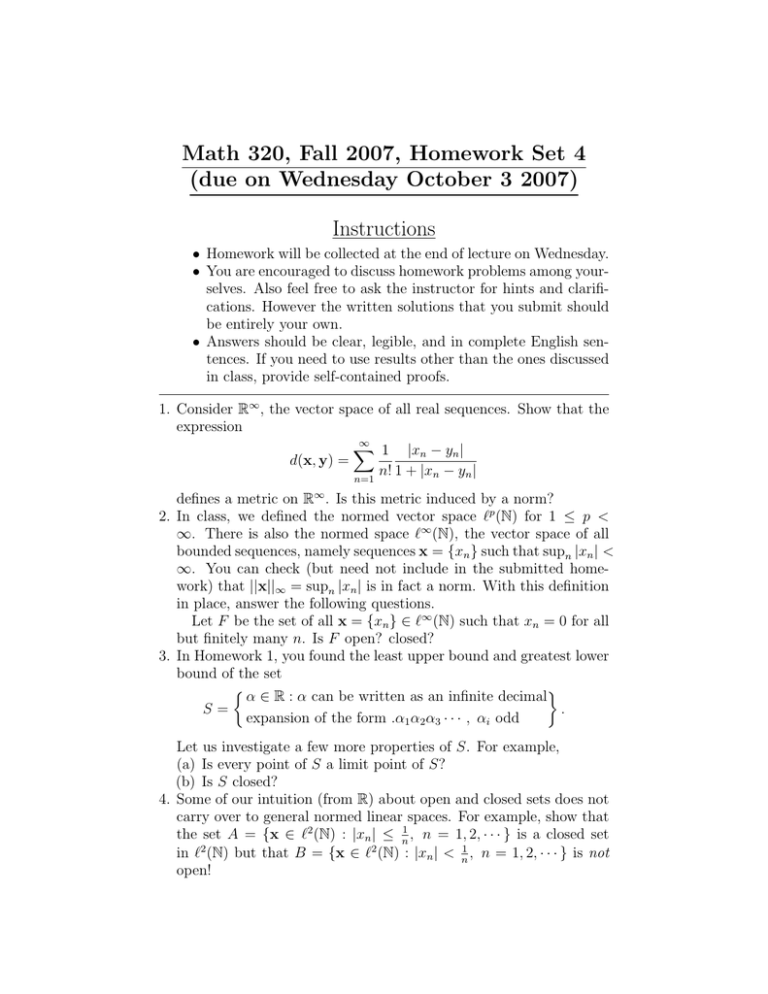
Math 320, Fall 2007, Homework Set 4
(due on Wednesday October 3 2007)
Instructions
• Homework will be collected at the end of lecture on Wednesday.
• You are encouraged to discuss homework problems among yourselves. Also feel free to ask the instructor for hints and clarifications. However the written solutions that you submit should
be entirely your own.
• Answers should be clear, legible, and in complete English sentences. If you need to use results other than the ones discussed
in class, provide self-contained proofs.
1. Consider R∞ , the vector space of all real sequences. Show that the
expression
∞
X
1 |xn − yn |
d(x, y) =
n! 1 + |xn − yn |
n=1
defines a metric on R∞ . Is this metric induced by a norm?
2. In class, we defined the normed vector space `p (N) for 1 ≤ p <
∞. There is also the normed space `∞ (N), the vector space of all
bounded sequences, namely sequences x = {xn } such that supn |xn | <
∞. You can check (but need not include in the submitted homework) that ||x||∞ = supn |xn | is in fact a norm. With this definition
in place, answer the following questions.
Let F be the set of all x = {xn } ∈ `∞ (N) such that xn = 0 for all
but finitely many n. Is F open? closed?
3. In Homework 1, you found the least upper bound and greatest lower
bound of the set
α ∈ R : α can be written as an infinite decimal
S=
.
expansion of the form .α1 α2 α3 · · · , αi odd
Let us investigate a few more properties of S. For example,
(a) Is every point of S a limit point of S?
(b) Is S closed?
4. Some of our intuition (from R) about open and closed sets does not
carry over to general normed linear spaces. For example, show that
the set A = {x ∈ `2 (N) : |xn | ≤ n1 , n = 1, 2, · · · } is a closed set
in `2 (N) but that B = {x ∈ `2 (N) : |xn | < n1 , n = 1, 2, · · · } is not
open!
2
5. A set that is simultaneously closed and open is sometimes called a
clopen set. For example, we have already seen in class that every
set in the discrete space N is clopen. Show that R has no nontrivial
clopen sets. Find a metric space where some (but not all) sets are
clopen.
6. A set A is said to be dense (or everywhere dense) in a metric space
(M, d) if every point in M \ A is a limit point of A, or equivalently
Ā = M . For example, Q and R \ Q are both dense in R. A metric
space is separable if it contains a countable dense subset. Thus R
(or for that matter any Rn , why?) is separable.
(a) Show that A is dense in M if and only if Ac has empty interior.
(b) Are `2 (N) and `∞ (N) separable?
(c) Can R have a proper open dense subset? If yes, find one. If not,
explain why not.
7. (Optional) Let C0 denote the set of all sequences in `∞ that converge
to zero. Show that C0 is a closed subspace of `∞ .
8. (Optional) We used a result in class called Hölder’s inequality to
prove that (`p (N), || · ||p ) is a normed linear space. Follow the steps
outlined below to deduce a proof of this result. In this problem, p
and q are always numbers satisfying 1 < p, q < ∞, 1/p + 1/q = 1.
(a) For any a, b ≥ 0 show that ab ≤ ap /p + bq /q, with equality if
and only if ap−1 = b. This is known as Young’s inequality.
(b) Use Young’s inequality to prove Hölder’s inequality, namely,
given x ∈ `p , y ∈ `q , show that
∞
X
|xi yi | ≤ ||x||p ||y||q .
i=1
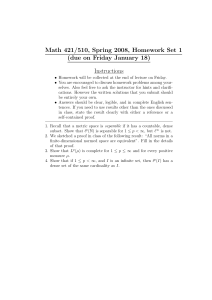
![Mathematics 321 2008–09 Exercises 3 [Due Friday November 28th.]](http://s2.studylib.net/store/data/010730633_1-1360c37f24aa4daff2f3b87051f0f5d8-300x300.png)
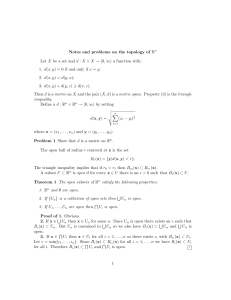
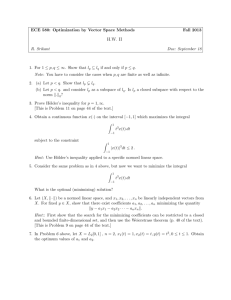
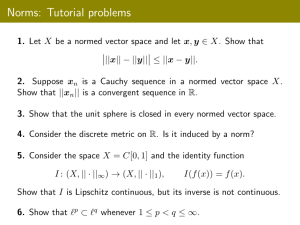


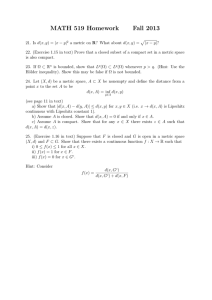
![18.125 Homework 10 : [0, 1] → [0, 1]](http://s2.studylib.net/store/data/010491524_1-2ff13645829ce7088147b1ea2705ee77-300x300.png)

